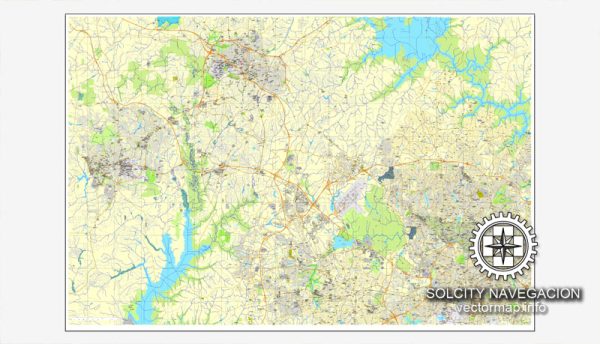Raleigh, Chapel Hill, and Durham are three cities located in the Research Triangle region of North Carolina, in the United States. Each of these cities has its own unique socio-economic characteristics, but they are often considered together due to their proximity and their shared status as hubs for education, technology, and research. Here’s a brief socio-economic description of each city:
- Raleigh:
- Raleigh is the capital of North Carolina and the largest city in the Research Triangle area. It is known for its strong and diverse economy.
- The city is home to numerous tech companies, financial institutions, and government agencies. The Research Triangle Park (RTP) is nearby and hosts a variety of high-tech and biotech companies.
- The median household income in Raleigh is relatively high, and the city has a growing job market with a focus on technology, research, and healthcare.
- Raleigh has a well-educated population, with several universities and colleges contributing to the city’s intellectual capital.
- The cost of living in Raleigh is moderate compared to some other major U.S. cities, making it an attractive place for young professionals and families.
- Chapel Hill:
- Chapel Hill is a smaller city known for its academic institutions, primarily the University of North Carolina at Chapel Hill (UNC).
- The presence of UNC contributes significantly to the city’s economy and culture, with a focus on education, healthcare, and research.
- The city has a high level of education and a well-educated workforce due to the university’s influence.
- Chapel Hill’s socio-economic profile is more influenced by academia and healthcare than traditional industry, leading to a different economic dynamic compared to Raleigh and Durham.
- Durham:
- Durham is another major city in the Research Triangle area and is known for its revitalized downtown area and the presence of Duke University.
- The city has a diverse economy with a mix of tech companies, healthcare institutions, and a growing startup scene.
- The cost of living in Durham is generally lower than in larger metropolitan areas, making it an attractive place for families and young professionals.
- The presence of both Duke University and the Research Triangle Park plays a significant role in Durham’s socio-economic landscape.
- Durham has seen substantial growth and development in recent years, contributing to its socio-economic vibrancy.
Overall, these three cities share common characteristics such as a focus on education, research, and technology, which have a positive impact on their socio-economic profiles. However, they each have their unique strengths and attributes that contribute to the region’s overall dynamism.


 Author: Kirill Shrayber, Ph.D.
Author: Kirill Shrayber, Ph.D.